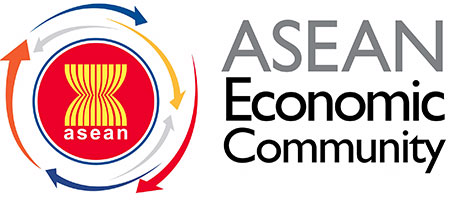Vietnam’s plastics industry prepares for AEC launch

This information was stressed at the last week seminar titled “Vietnam’s plastic industry to welcome opportunities from AEC”, at the 15th International Plastics and Rubber Industry Exhibition 2015 held in Ho Chi Minh City.
The domestic plastic industry is currently one of the fastest-growing sectors in Vietnam, with the average growth of 15-20 percent per annum. Vietnamese-made plastic goods have been sold in several countries around the world with highly competitive advantages, especially for packing, household, building, and technical products. However, the development of the local plastics industry is considered unstable, because it is dependent on imported materials. The domestic material supply accounts for a mere 10-15 percent of the total demand. Thus, the price of plastic products fluctuates in accordance with material costs and the US dollar exchange rate.
According to Nguyen Thanh Binh from the Vietnam Chamber of Commerce and Industry (VCCI), Vietnamese companies should research the plastics industries in Thailand, Singapore, and Indonesia to find solutions ahead of the AEC establishment.
Thailand has Southeast Asia’s largest plastics industry. They have been preparing for economic integration since 2011 by focusing on environmental factors to meet the high demand of the US, European, and Japanese markets. Bioplastics, using agricultural byproducts to make biodegradable and environmentally friendly plastics, has been developed in Thailand over the past seven years. However, the industry is losing the advantage of its low-cost workforce, as wages have increased by 45 per cent due to the economic growth.
Meanwhile, Singapore’s plastics industry focuses on developing value-added projects with design and state-of-the-art technology. The country has produced plastics used in healthcare and digital electronics sectors, which make their products more competitive in the market.
On the other hand, Indonesia has an abundant workforce, so the plastics industry shares the same growth rate as Vietnam. Indonesia mainly produces plastics for the food and beverage sector, while Malaysia focuses on making plastics used in shipbuilding and membrane technology for printing.
Binh noted, “To seize new opportunities from the AEC, Vietnam needs to overcome technical barriers, especially environmental standards. Domestic firms should strive to build international brands to compete with other ASEAN members. The Vietnamese government should develop supporting industries for the plastics sector and form an industrial cluster for domestic firms, as 80 per cent of them are small- and medium-sized enterprises.”
What the stars mean:
★ Poor ★ ★ Promising ★★★ Good ★★★★ Very good ★★★★★ Exceptional
Latest News
More News
- Growth beckons for GenAI startups in Vietnam (November 21, 2024 | 17:47)
- SABECO to elevate Vietnam's beverage industry to global standards (November 21, 2024 | 17:36)
- ABeam Consulting Vietnam introduces BSQCD Purchasing Strategy Framework (November 21, 2024 | 16:40)
- Major railway requires debt considerations (November 21, 2024 | 12:07)
- Reviving a new life cycle for plastic waste (November 21, 2024 | 09:16)
- Key balances maintained for industrial production (November 21, 2024 | 08:00)
- Ecolean Vietnam honoured with prestigious sustainability award (November 19, 2024 | 10:01)
- HEINEKEN Vietnam’s clear path towards net-zero (November 18, 2024 | 15:13)
- VLCA 2024 honours corporate governance excellence as listed companies raise the bar (November 18, 2024 | 09:00)
- High-tech personnel to drive competition (November 17, 2024 | 09:21)


















 Mobile Version
Mobile Version